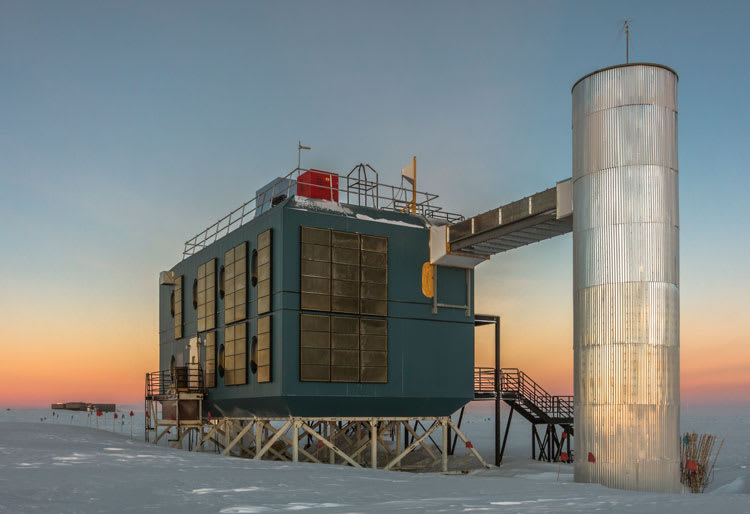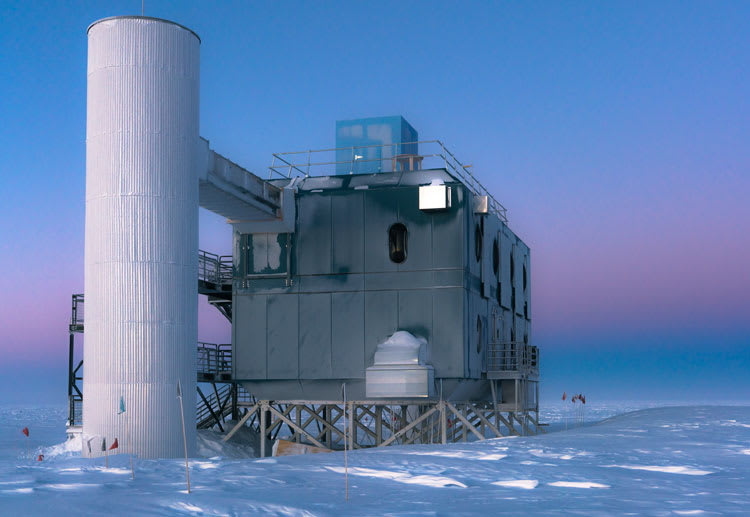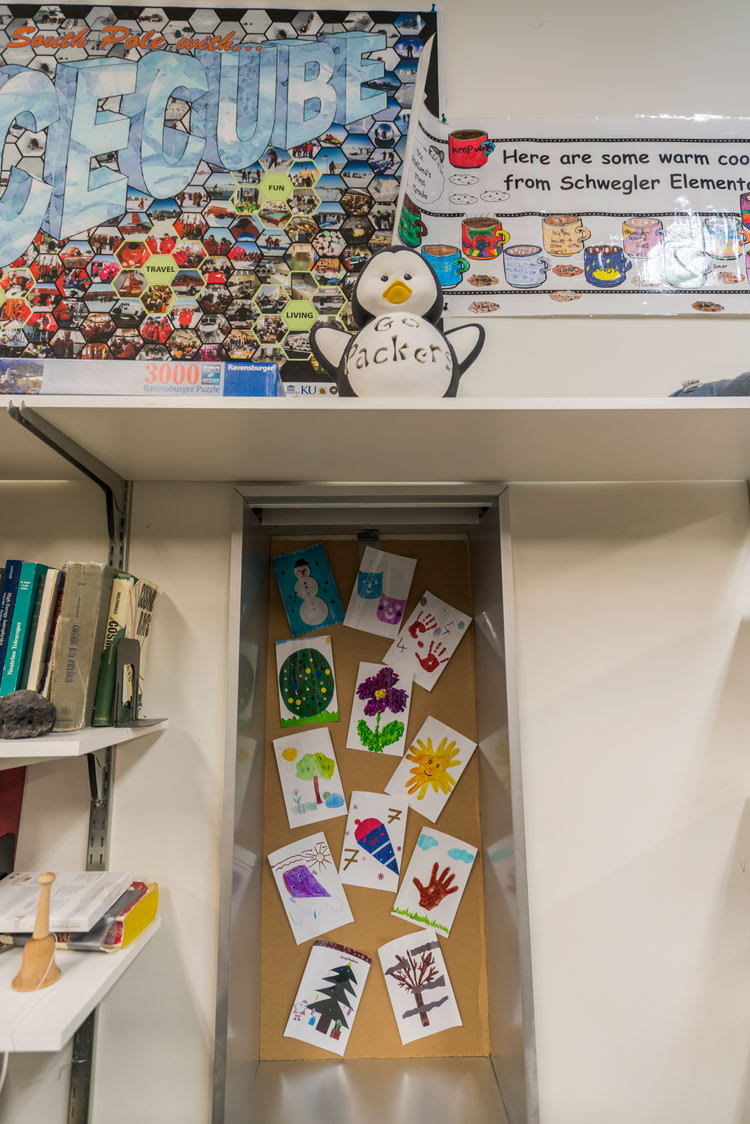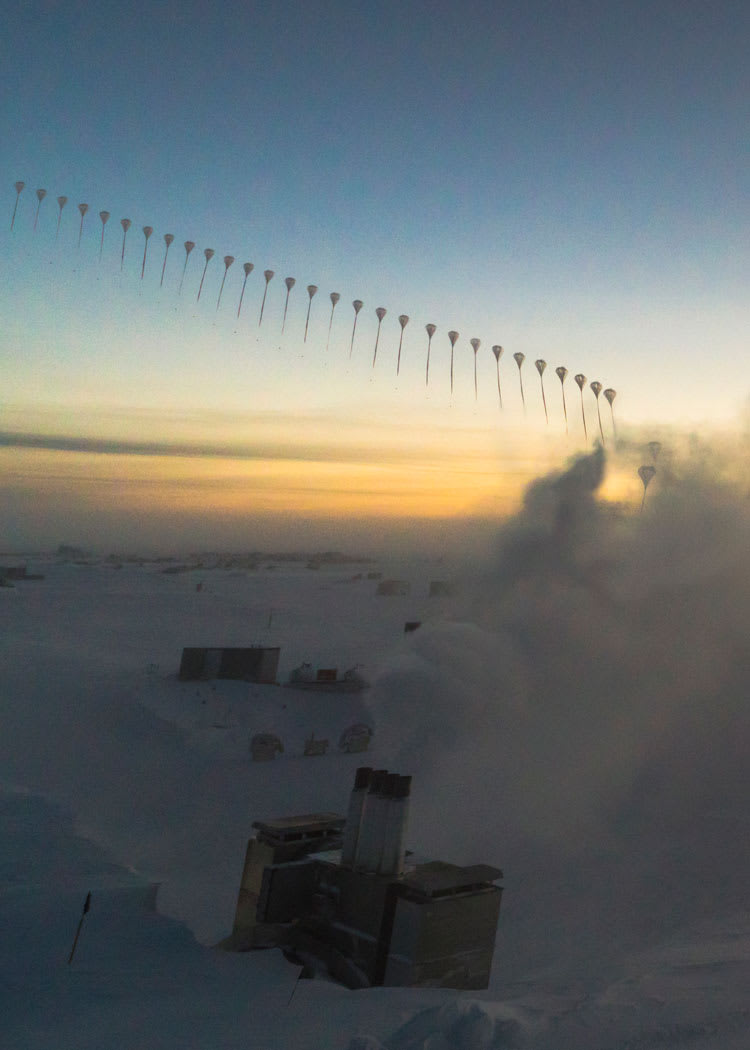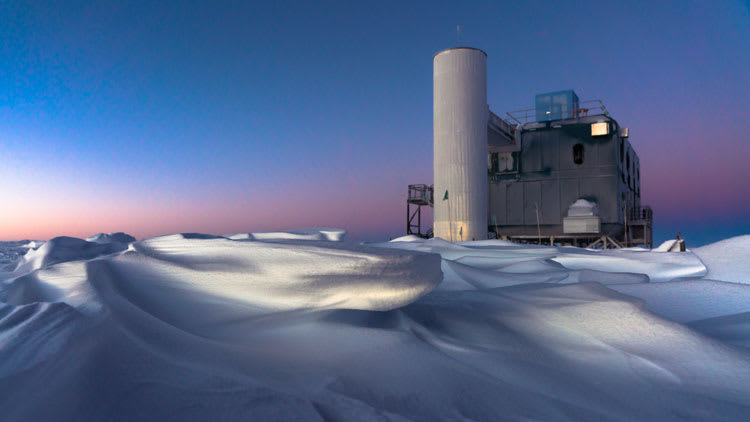
The sun has set, they’ve held their traditional sunset dinner, and yet … it’s still light outside. Well, that’s twilight. Even after the sun falls below the horizon, the scattering of light in the upper atmosphere illuminates the lower atmosphere and the Earth’s surface. At the South Pole, the initial period of twilight—or civil twilight, as it’s called—can last two to three weeks. The colors in the sky are amazing now, and they vary depending on the direction you face. Below are two images of the IceCube Lab. In the first, facing the sunset and with the station in the distance, the horizon appears reddish and blends into orange and yellow as your eye travels upward. In the second, from the opposite side of the building and facing away from the sunset, the horizon appears as a blue band, with a layer of rosy hues above it.
Last week at the Pole was a week like many, with lot of different things going on. They held an open house for all the Dark Sector experiments, window coverings went up in the ICL and in the station, NOAA launched a large weather balloon, a false fire alarm sounded, and the week wrapped up with an enjoyable talk by the station manager on travel adventures in Papua New Guinea.
